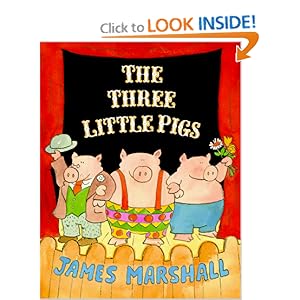
Pickney, Jerry. Noah’s Ark. SeaStar Books. 2002. ISBN: 1587172011
God was not pleased with the people on earth but he loved Noah who was right in the sight of the Lord. God told Noah to build an ark because he was going to cause a great flood that would swallow up every living thing. He also told Noah to bring two of every creature as long as food for them and himself. God promised that he, his family and the animals would be safe. Noah’s family helped him build the ark and store up food. The people called them fools for building an ark on dry land. The animals heard God’s call and went to the ark and then the rains began. Water rose over the cities and towns but God remembered Noah and his family and all the animals – they stayed safe. Noah sent out a raven to see if it found dry land. After it didn’t he sent a dove. On its second return the dove brought back an olive branch in its beak, symbolizing it had found land. The waters dried up and the animals left the ark. Noah and his family praised God. God promised that he would never again destroy the earth with a flood and set a rainbow to show a sign of this promise.
“Characters in traditional tales are typically archetypes of good or evil, described with a few broad strokes, and symbolic of our most basic human traits” (Vardell 92). Noah is our hero who is in right standing with God. Because he is not like the other people on earth, he is saved from the flood and given a specific duty to perform. I am glad that the Supreme Court asserted that “one’s education is not complete without a study of comparative religion” (Norton, 1993). I live in a Christian influenced community and not having such books on the shelf at a library would be unheard of. The pictures in this book are the loveliest part of this version of the Biblical story. I can just imagine being a child and looking at these beautiful, large water color paintings and feeling enveloped in the story. The whales swimming underneath the ark and the Earth displayed in rainbows in the back of the book gives the whole story a happy, content, calming effect. I even went as far as to add this book to my own collection (along with “Kitten’s First Full Moon”).
This book did win the Caldecott Honor Award. Booklist states, “One of the best-known Old Testament stories gets a powerful traditional interpretation by an artist who seems utterly comfortable with the majesty of the tale, in terms of both meaning and visual scale…Like the jacket art, however, there's much that is exceptional here, especially an impressive, quiet view of the ark sitting patiently as rain pounds the earth and the swirling sea begins to engulf the whole world. Definitely make room for this on the shelf.” This book would be wonderful for children at Storytime at my library because they would be familiar with the story but see it in a whole new way. Perhaps reading other books by Pickney such as “The Lion and the Mouse” would be good for a themed Storytime. I think children would love the artwork in these books.
Reference
Vardell, Sylvia M. Children’s Literature in Action. Libraries Unlimited. Westport, CT. 2008




